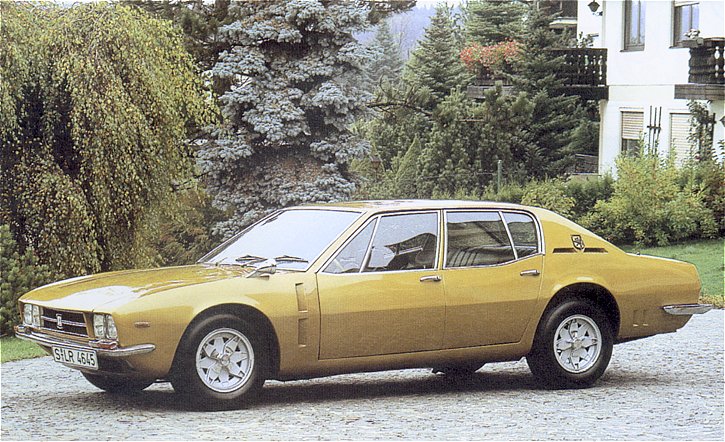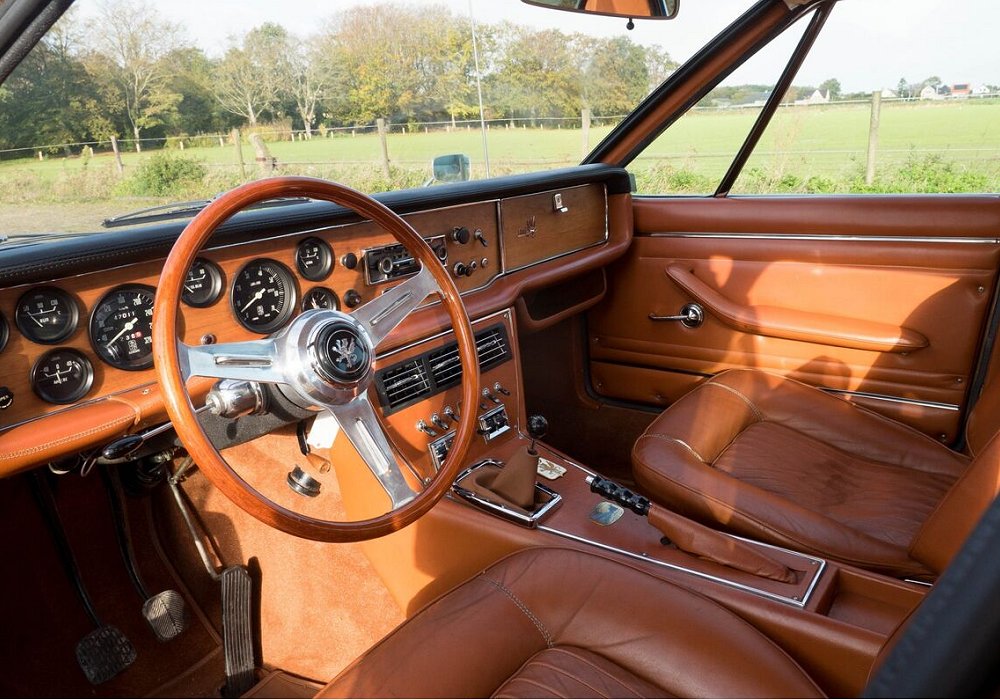Description
The ISO Rivolta S4 Fidia 300 was a car of quiet power and distinguished elegance — a luxurious four-door grand tourer that brought together the performance of an Italian sports car and the comfort of a high-speed saloon. Launched in 1967 and often described as the world’s fastest four-door car, the Fidia 300 embodied ISO’s belief that refinement and performance could coexist without compromise. It was the company’s bold step into a market dominated by Maserati’s Quattroporte and Jaguar’s XJ, but with an identity entirely its own: Italian design by Giorgetto Giugiaro, a chassis by Giotto Bizzarrini, and the smooth authority of an American Chevrolet V8.
The story of the Fidia began in the mid-1960s, when Piero Rivolta, son of company founder Renzo Rivolta, sought to expand ISO’s range beyond the two-door GTs that had defined the marque. He envisioned a grand touring saloon that could carry four passengers at high speed across Europe in supreme comfort — a car that would appeal to industrialists, politicians, and film stars as readily as to enthusiasts. The task of styling the car was entrusted to Giorgetto Giugiaro, then working for Ghia, who had already proven his mastery of proportion and line with the ISO Grifo. The result was a saloon that combined grace and authority in equal measure.
The Fidia’s body was a masterpiece of restrained design. Giugiaro avoided the heavy ornamentation typical of the period, opting instead for clean, flowing lines and an almost architectural sense of proportion. The long bonnet, crisp shoulder line, and subtly flared arches gave the car a sense of motion even at rest, while the expansive glass area ensured excellent visibility and a light, airy cabin. The front end, with its twin headlights set within a slim horizontal grille, conveyed both dignity and intent. The rear, truncated and taut, ended in neatly integrated tail lamps and a simple chrome bumper. Every line was deliberate, every curve balanced — the design carried the quiet assurance of a car built for power and grace rather than flamboyance.
Beneath the elegant exterior lay engineering of remarkable sophistication. The chassis was based on the proven structure of the ISO Rivolta GT — a pressed-steel monocoque with a tubular front subframe designed by Giotto Bizzarrini, whose genius for balance and strength was evident throughout. The front suspension used unequal-length wishbones and coil springs, while the rear employed a de Dion axle located by twin trailing arms and a Watts linkage, with inboard disc brakes to reduce unsprung weight. Power-assisted steering and servo-assisted disc brakes on all four wheels ensured that the car handled and stopped with the same assurance as its two-door siblings.
Power for the S4 Fidia 300 came from Chevrolet’s venerable 327 cubic inch (5.4-litre) small-block V8 — the same engine that powered the ISO Grifo and the earlier Rivolta IR 300. In the Fidia, it developed around 300 horsepower, transmitted to the rear wheels through a four-speed manual ZF gearbox or an optional GM Hydramatic automatic. The result was performance that defied expectations for a car of its size and comfort: 0–100 km/h (62 mph) in about 7.2 seconds and a top speed of approximately 225 km/h (140 mph). More impressive still was the car’s ability to cruise effortlessly at high speed, the big V8 turning lazily while delivering endless reserves of torque. It was a saloon that could cross continents with the speed and composure of a true grand tourer.
Inside, the Fidia 300 offered one of the most luxurious interiors of any Italian car of the era. ISO spared no expense in its design or materials. The cabin was trimmed in hand-stitched Connolly leather, with deep wool carpeting and polished walnut fascia. The dashboard featured a full suite of Veglia instruments, elegantly arranged across a horizontal wooden panel, while the centre console carried a bank of finely machined toggle switches and chrome-trimmed ventilation controls. The seats were wide and deeply cushioned, providing comfort for long journeys, and the rear passengers enjoyed generous legroom and large side windows that filled the space with light. Details such as the aircraft-style door handles, finely chromed window frames, and delicate switchgear gave the car an atmosphere of bespoke craftsmanship that rivalled anything from Rolls-Royce or Maserati.
Driving the ISO Rivolta Fidia 300 was an experience unlike any other four-door car of its time. The steering was light and precise, the suspension supple yet composed, and the engine delivered effortless thrust from idle to redline. The car’s long wheelbase and balanced chassis gave it remarkable stability even at very high speeds, while the de Dion rear suspension ensured that bumps and imperfections were absorbed with grace rather than drama. Contemporary road tests praised the Fidia for its ability to combine performance and comfort seamlessly — “a car that behaves like a thoroughbred GT but rides like a limousine,” wrote one journalist.
ISO marketed the Fidia with quiet confidence, using the slogan “Le quattro poltrone più veloci del mondo” — “The fastest four seats in the world.” It was a boast that rang true. The Fidia was as fast as many sports cars and far more refined. Owners included aristocrats, business magnates, and celebrities — among them the legendary musician John Lennon, who was photographed proudly with his Fidia in London, making the car an icon of sophisticated modernity.
In 1971, ISO introduced the updated Fidia 340 and later the Fidia 351, powered by larger Chevrolet and then Ford engines as supply chains shifted, but the original Fidia 300 remained the purest expression of the design. Production was limited, as each car was hand-built at ISO’s Bresso factory near Milan with meticulous attention to detail. Between 1967 and 1974, only about 192 Fidias were produced in total, with the 300-series cars accounting for the earliest and most desirable examples.
Today, the ISO Rivolta S4 Fidia 300 is celebrated as one of the most elegant and sophisticated four-door grand tourers ever built. Collectors value it for its rarity, Giugiaro’s timeless styling, and the sheer quality of its engineering and construction. Mechanically robust thanks to its Chevrolet powertrain, it remains as usable today as it was in the late 1960s — a car that can still cover great distances with speed, composure, and grace.
The Fidia 300 stands as a symbol of ISO Rivolta’s quiet confidence and uncompromising craftsmanship. It was the company’s statement to the world that a car could be both a family saloon and a high-performance GT — a blend of strength, sophistication, and restraint. In an era defined by glamour and excess, the ISO Fidia 300 achieved something more enduring: timeless dignity paired with effortless power. It remains one of the great unsung masterpieces of Italian automotive design — the true gentleman’s express of its generation.



